Deliver Weather Products and Services to Clients
Type of resources
Topics
Keywords
Contact for the resource
Provided by
Years
Formats
Representation types
Update frequencies
status
-
The Regional Air Quality Deterministic Prediction System FireWork (RAQDPS-FW) carries out physics and chemistry calculations, including emissions from active wildfires, to arrive at deterministic predictions of chemical species concentration of interest to air quality, such as fine particulate matter PM2.5 (2.5 micrometers in diameter or less). Geographical coverage is Canada and the United States. Data is available at a horizontal resolution of 10 km. While the system encompasses more than 80 vertical levels, data is available only for the surface level. The products are presented as historical, annual or monthly, averages which highlight long-term trends in cumulative effects on the environment.
-

Climate observations are derived from two sources of data. The first are Daily Climate Stations producing one or two observations per day of temperature, precipitation. The second are hourly stations that typically produce more weather elements e.g. wind or snow on ground.
-
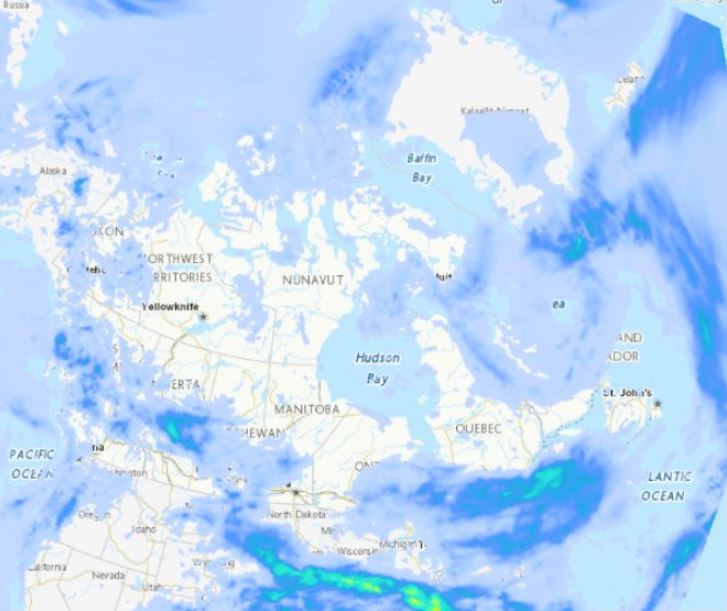
The Regional Deterministic Precipitation Analysis (RDPA) produces a best estimate of precipitation amounts that occurred over a period of 24 hours. The estimate integrates data from in situ precipitation gauge measurements, weather radar, satellite imagery and numerical weather prediction models. Geographic coverage is North America (Canada, United States and Mexico). Data is available at a horizontal resolution of 10 km. The 24 hour analysis is produced twice a day and is valid at 06 and 12 UTC. A preliminary analysis is available approximately 1 hour after the end of the accumulation period and a final one is generated 7 hours later in order to assimilate more gauge data.
-
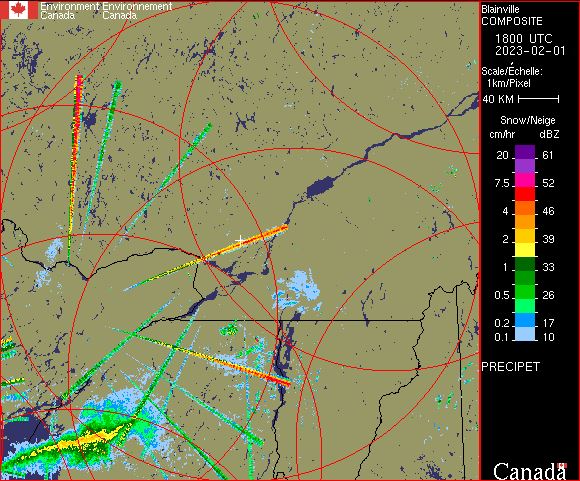
The PRECIP-ET (PRECIPET on images) is an extension of the PRECIP product (hence the use of ET in the product name). Compared to the previous PRECIP product, the PRECIP-ET performs a suite of additional quality control (QC) tests and tracks issues better. For example, Doppler filters might be rejecting moderate ground echoes in a particular area and thus weak meteorological echoes would not be detectible. In this case, PRECIP-ET would flag the missing data area, whereas PRECIP would simply treat the area as no echoes. This additional quality treatment is why we have migrated to PRECIP-ET in 2013, to get an improved service. The PRECIP-ET image is designed to show the precipitation close to the ground, by using Doppler technology processing for echoes within 128 km from the radar site for the C-Band radars and 240 km for the new S-Band radars. Doppler technology allows for better resolution of the precipitation echoes and also provides the ability to detect the movement of precipitation in relation to the radar (i.e. are the raindrops or snowflakes moving towards or away from the radar and at what speed). Beyond this 128 km limit, the echoes are displayed using the more conventional CAPPI processing.
-
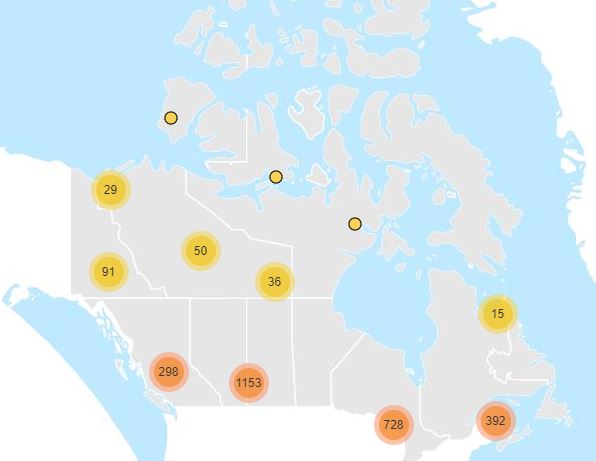
A station is a site on a river or lake where water quantity (water level and flow) are collected and recorded.
-
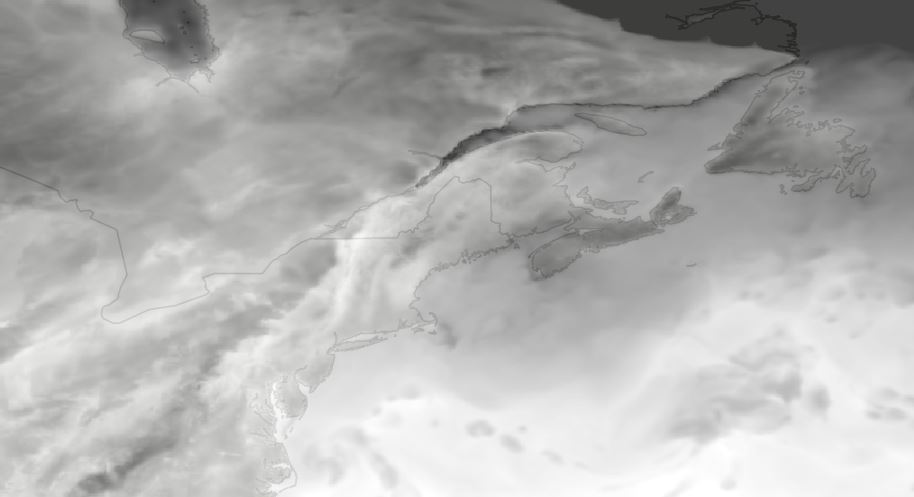
WCPS-coupled forecast is the component in the Water Cycle Prediction System (WCPS) that provides the coupled atmosphere-ocean-sea ice forecasts at a 1km resolution (0.008 x 0.008 degree) over the Great Lakes, St. Lawrence River and the Gulf of St. Lawrence. It launches 4 times a day at 00, 06, 12, and 18 UTC and produces 84 hours forecast, based on the atmospheric model GEM, coupled with the ocean-ice model NEMO-CICE. The products from WCPS-coupled forecasts are (1) GEM : surface air temperatures, surface wind velocities, and surface runoff (2) NEMO-CICE : variety of lake/ocean sea ice variables, for example, lake levels and temperatures. They are designed to help forecasters issuing bulletins and warnings in ice-infestested waters for navigation, water level alert, emergency response, Search and Rescue, and CIS Sea Ice forecast.
-
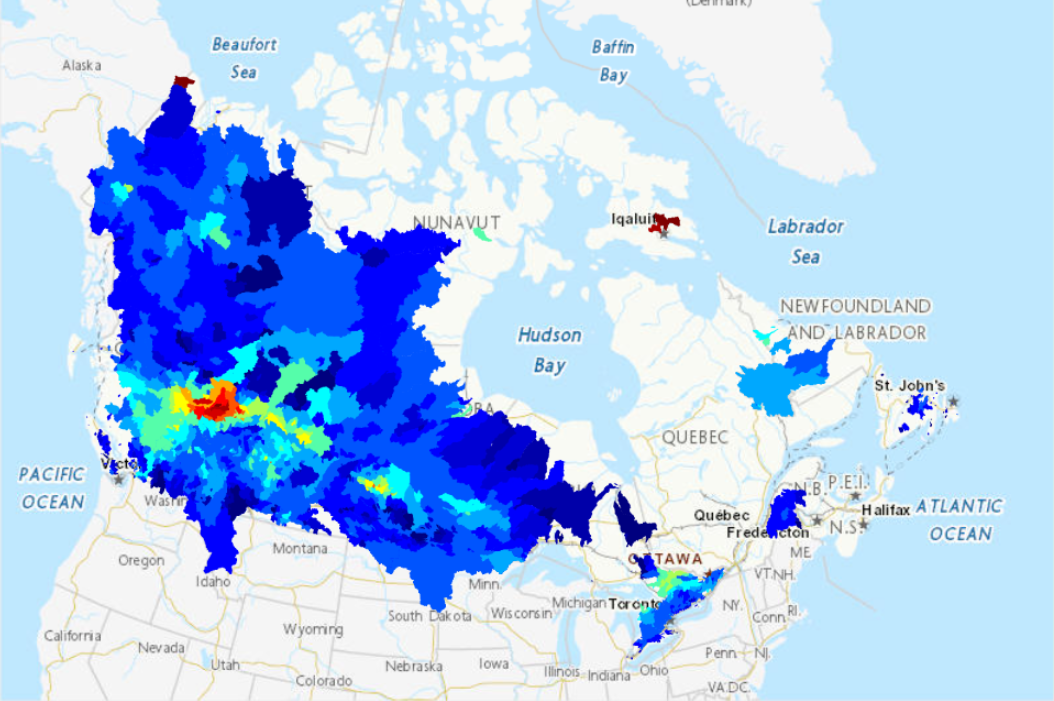
The Canadian Precipitation Analysis System (CaPA) produces a best estimate of 6 and 24 hour precipitation amounts. This objective estimate integrates data from in situ precipitation gauge measurements, radar QPEs and a trial field generated by a numerical weather prediction system. In order to produce the High Resolution Deterministic Precipitation Analysis (HRDPA) at a resolution of 2.5 km, CaPA is connected to the continental HRDPS for its trial field. CaPA-HRDPA produces four analyses of 6 hour amounts per day, valid at synoptic hours (00, 06, 12 and 18 UTC) and two 24 hour analyses valid at 06 and 12 UTC. A preliminary production is started 1 hour after valid time and a final one is launched 7 hours later. This translates into a production of 12 analyses per day.
-

The Regional Ensemble storm Surge Prediction System (RESPS) produces storm surge forecasts using the DalCoast ocean model. DalCoast (Bernier and Thompson 2015) is a storm surge forecast system for the east coast of Canada based on the depth-integrated, barotropic and linearized form of the Princeton Ocean Model. The model is forced by the 10 meters winds and sea level pressure from the Global Ensemble Prediction System (GEPS).
-
Statistical post-processing of weather and environmental forecasts issued by numerical models, including the Global Deterministic Prediction System (GDPS), reduces systematic bias and error variance of raw numerical forecasts. This is achieved by establishing an optimal relationship between observations recorded at stations and co-located numerical model outputs. The Updatable Model Output Statistics (UMOS) system at Environment Canada carries out this task. The statistical relationships are built using the Model Output Statistics (MOS) method and a multiple linear regression (MLR) technic. The weather and environmental variable being statistically post-processed by UMOS consists of air temperature at approximately 1.5 meters above ground. The absence of a statistically post-processed forecast can be caused by a missing statistical model due to insufficient observation data quality or quantity. Geographical coverage includes weather stations across Canada. Statistically post-processed forecasts are available at the same frequency of emission as the numerical model producing the raw forecasts and at 3-hourly lead times up to 144 hours (6 days) for the GDPS.
-

The Air Quality Health Index (AQHI) is a scale designed to help quantify the quality of the air in a certain region on a scale from 1 to 10. When the amount of air pollution is very high, the number is reported as 10+. It also includes a category that describes the health risk associated with the index reading (e.g. Low, Moderate, High, or Very High Health Risk). The AQHI is calculated based on the relative risks of a combination of common air pollutants that are known to harm human health, including ground-level ozone, particulate matter, and nitrogen dioxide. The AQHI formulation captures only the short term or acute health risk (exposure of hour or days at a maximum). The formulation of the AQHI may change over time to reflect new understanding associated with air pollution health effects. The AQHI is calculated from data observed in real time, without being verified (quality control).
